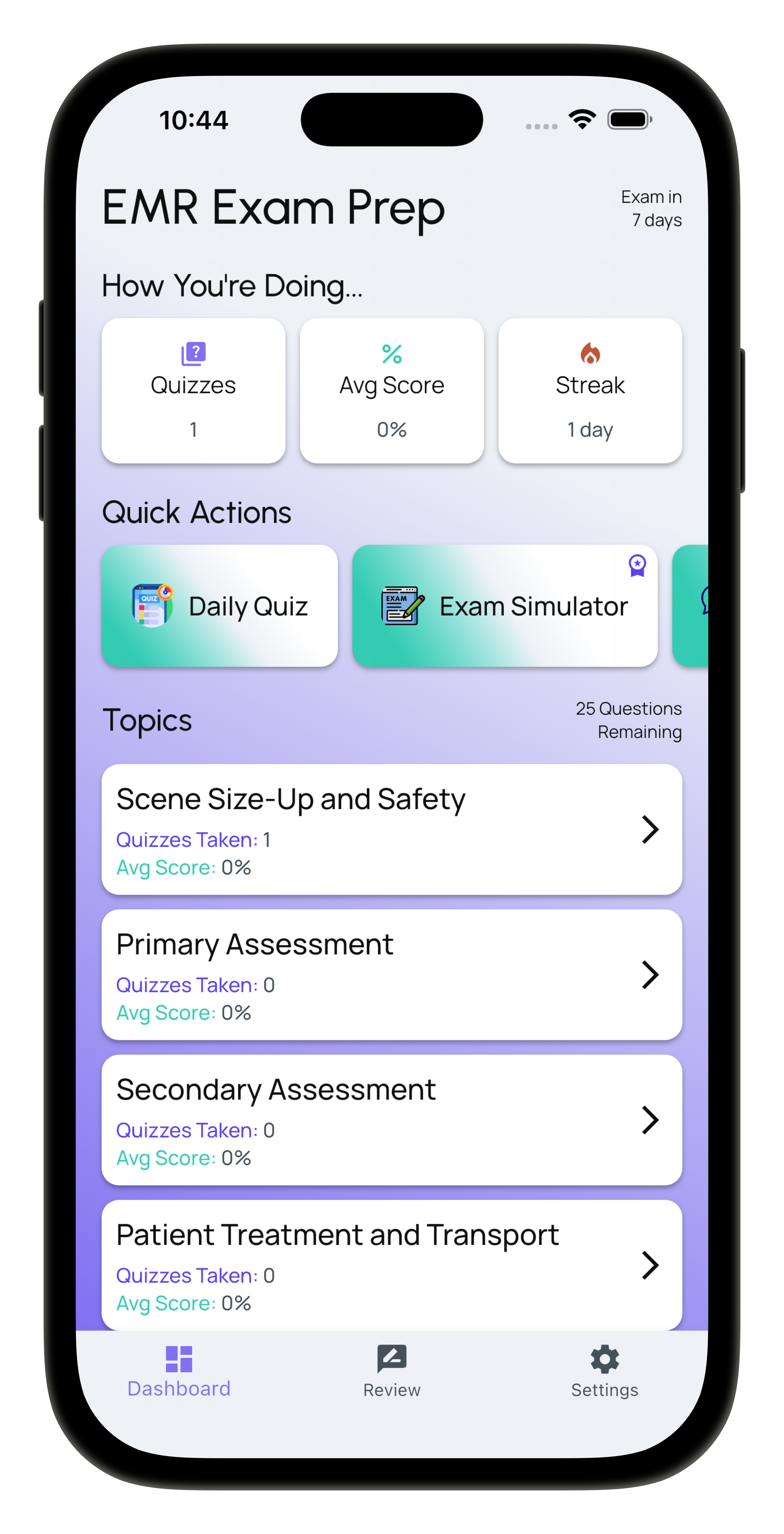EMR Exam Prep
In the high-stakes world of emergency medical response, communication is as critical as clinical skills. The ability to convey information clearly and effectively can mean the difference between life and death. For aspiring Emergency Medical Responders (EMRs), honing communication skills is essential. This blog post will explore the importance of communication in emergency medical situations, provide practical training and study tips, and offer real-world application examples to help you succeed in your EMR journey.
Understanding the Basics of Emergency Medical Communication
The Importance of Clear Communication
In emergency medical situations, responders must quickly assess a scene, determine the needs of the patient, and relay critical information to team members and other healthcare professionals. Clear communication ensures that everyone involved understands their roles and responsibilities, which can lead to better patient outcomes.
Key Communication Concepts
-
Active Listening: This involves not just hearing but understanding the information being conveyed. In emergencies, you may encounter distressed patients or witnesses. Practicing active listening allows you to gather the essential details and build trust.
-
Clarity and Conciseness: Use simple, direct language. Avoid jargon that may confuse bystanders or patients. Be as brief as possible while still conveying all necessary information.
-
Non-Verbal Communication: Body language, eye contact, and facial expressions play a crucial role in communication. Being aware of your non-verbal cues can help convey confidence and reassurance to patients and their families.
Practical Training and Study Tips for Effective Communication
1. Role-Playing Scenarios
Engage in role-playing exercises during your training sessions. Simulate various emergency scenarios with fellow students or instructors. This practice can help you become comfortable with communicating under pressure and refine your verbal and non-verbal skills.
2. Participate in Group Discussions
Join study groups or forums where you can discuss case studies or practice communication strategies. Group discussions foster an environment where you can learn from others’ experiences and viewpoints.
3. Seek Feedback
After practicing scenarios, ask for feedback from peers or instructors. Constructive criticism can help you identify areas for improvement, allowing you to adjust your communication style accordingly.
4. Utilize EMR Exam Prep Resources
Make use of the comprehensive study materials and practice questions available through EMR Exam Prep. These resources often include scenarios that emphasize communication skills, providing you with an opportunity to test your knowledge and application of these essential concepts.
Real-World Application Examples
Scenario 1: Responding to a Car Accident
Imagine you are on the scene of a car accident with multiple victims. Your first step is to assess the situation. As you approach the scene, clearly communicate with your team:
- “I see two vehicles involved. I will check the blue car for possible injuries while you assess the red car.”
This clear communication ensures your team knows their responsibilities, allowing for a more efficient response.
Scenario 2: Communicating with Bystanders
While treating a patient, a bystander approaches, wanting to help. It’s essential to communicate calmly:
- “Thank you for your willingness to help. Please stand back and allow us to work. If you could call for additional assistance, that would be great.”
This demonstrates respect for the bystander’s desire to help while maintaining focus on the patient.
Career Guidance for New EMRs
As you embark on your EMS career, remember that communication is a skill that evolves with practice and experience. Here are some tips to help you excel:
-
Seek Mentorship: Connect with experienced EMRs or paramedics who can guide you. They can share firsthand insights about communication in real-life scenarios.
-
Continuous Learning: Stay updated with the latest communication strategies and tools in emergency medical response. Consider attending workshops or courses focused on communication skills.
-
Network with Peers: Join local EMS organizations or online communities. Networking can provide support, resources, and opportunities for collaboration.
Safety Considerations and Best Practices
Effective communication not only improves patient care but also enhances safety for responders. Here are some best practices:
-
Establish a Clear Chain of Command: In larger emergencies, designate roles and ensure everyone knows who to report to. This structure helps streamline communication.
-
Use Standardized Language: In high-pressure situations, use standardized terms and protocols (like those from the National Incident Management System) to reduce confusion.
-
Document Communication: Accurate documentation of communications can be crucial for legal and clinical purposes. Always record important exchanges that impact patient care.
Conclusion: Embrace Your Journey as an EMR
As you prepare for your EMR certification, remember that strong communication skills are a vital part of your training and future career. By focusing on active listening, clarity, and effective non-verbal communication, you’ll enhance your ability to respond to emergencies confidently.
Utilize the EMR Exam Prep resources to strengthen your knowledge and skills, and don’t hesitate to practice what you learn. Every interaction is an opportunity to improve your communication and, ultimately, your effectiveness as a lifesaver. Embrace this journey, and know that every step you take brings you closer to becoming a proficient Emergency Medical Responder.
Starting your EMR certification journey? Try EMR Exam Prep for practice questions and study materials designed to help you succeed as an Emergency Medical Responder.
